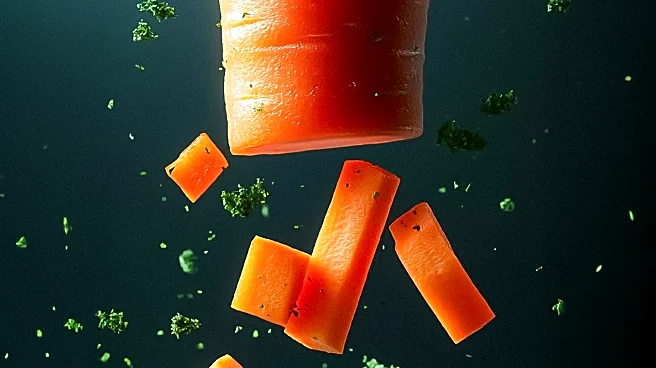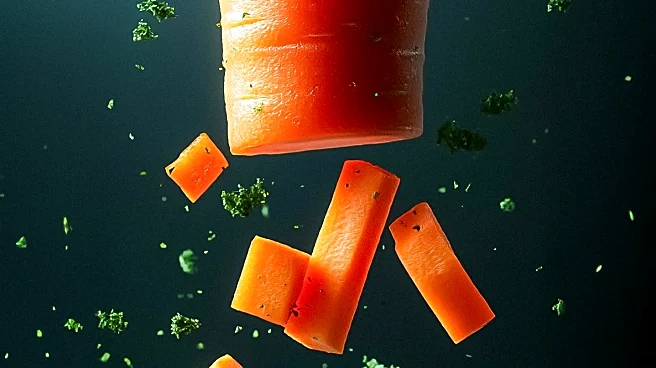What is the story about?
What's Happening?
Recent research has highlighted the presence of microplastics in common kitchen items, raising concerns about their impact on human health. Microplastics, tiny plastic particles less than 5 millimeters in size, have been found in nonstick cookware, plastic food containers, utensils, tea bags, spices, straws, and canned food linings. These particles can be ingested, inhaled, or absorbed through touch, potentially leading to health issues such as heart attacks, strokes, tissue inflammation, and cell death. The study emphasizes the need for consumers to consider alternatives like stainless steel or wooden utensils, glass containers, and reusable straws to reduce exposure to microplastics.
Why It's Important?
The discovery of microplastics in kitchen items is significant as it underscores the pervasive nature of plastic pollution and its potential health risks. With millions of microplastic particles potentially entering the human body through everyday kitchen use, there is growing concern about their long-term effects. This issue affects not only individual health but also broader environmental and food safety standards. As awareness increases, there may be shifts in consumer behavior towards more sustainable kitchen practices, impacting industries related to kitchenware and food packaging.
What's Next?
Further research is needed to fully understand the health implications of microplastics and to develop strategies for reducing exposure. Regulatory bodies may consider implementing stricter guidelines on the use of plastics in food-related products. Additionally, increased consumer demand for safer alternatives could drive innovation in the kitchenware industry, leading to the development of new products that minimize microplastic contamination.
AI Generated Content
Do you find this article useful?













